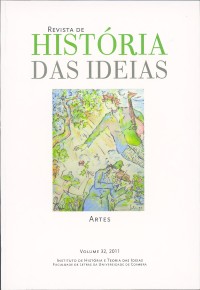Please use this identifier to cite or link to this item:
https://hdl.handle.net/10316.2/41404| Title: | Artes e multiculturalidade: o teatro como campo de diálogo intercultural | Other Titles: | Arts and multiculturality: theatre as afield of inter cultural dialogue | Authors: | André, João Maria | Issue Date: | 2011 | Publisher: | Imprensa da Universidade de Coimbra | Abstract: | O objectivo desta conferencia é demonstrar como o diálogo intercultural,
que parece ser dificultado pela incomensurabilidade entre culturas no campo do
pensamento e das ideias, não só é possível, mas tem sido mesmo uma realidade
no campo das artes, merecendo-nos uma atenção especial entre elas, as artes
performativas e do palco. Para isso contribuem determinados pressupostos,
princípios e operadores que procuraremos explicitar e que podem fazer luz sobre
as condições em que esse diálogo acontece e sobre os exemplos que o permitem
concretizar. Uma vez analisados esses pressupostos, procurar-se-á fazer, primeiro,
uma aproximação a este tema, através da análise semiótico-antropológica de
Patrice Pavis, acentuando as virtualidades e as limitações de um modelo que
assenta fundamentalmente no conceito de tradução. Esse modelo será depois
confrontado com os princípios de uma estética intercultural que procuraremos
extrair do percurso, dos pressupostos, do trabalho de encenação e dos dispositivos
nele aplicados, de dois encenadores e teatrólogos contemporâneos: Peter Brook
e Eugenio Barba, marcos incontornáveis do teatro na segunda metade do século
XX. Procuraremos demonstrar como a interculturalidade no teatro, para além de
uma sintáctica e de uma semântica da cultura, implica também uma "somática
da cultura" que reconheça ao corpo o seu lugar nas artes contemporâneas. The objective of this article is to demonstrate how intercultural dialogue, which seems to be embarrassed by the incommensurability between cultures in the field of thinking and of ideas, not only can be possible, but has also been a reality in the artistic field, namely, in this case, the stage and performing arts. We will try to make explicit the principles and operative concepts that contribute to that and which can clarify the conditions on which that dialogue happens and the examples that make them concrete. Once analyzed those principles, we will try an approach to this subject through the semiotic and anthropological analysis by Patrice Pavis, emphasizing the virtues and the limitations of a model that is supported mainly by a concept of translation. This model will be confronted with the principles of an intercultural aesthetics that we will attempt to extract from the trajectory, the principles, the staging and its devices, of two contemporary directors and playwrights: Peter Brook and Eugenio Barba, crucial names in theatre in the second half of the XX century. We will essay to demonstrate how interculturality in theatre, beyond a syntax and a semantics of culture, implies a "cultural somatic" which recognizes the place of the body in contemporary arts. |
URI: | https://hdl.handle.net/10316.2/41404 | ISSN: | 0870-0958 2183-8925 (digital) |
DOI: | 10.14195/2183-8925_32_20 | Rights: | open access |
| Appears in Collections: | Revista de História das Ideias |
Files in This Item:
| File | Description | Size | Format | |
|---|---|---|---|---|
| artes_e_multiculturalidade.pdf | 468.27 kB | Adobe PDF |  |
Items in DSpace are protected by copyright, with all rights reserved, unless otherwise indicated.
